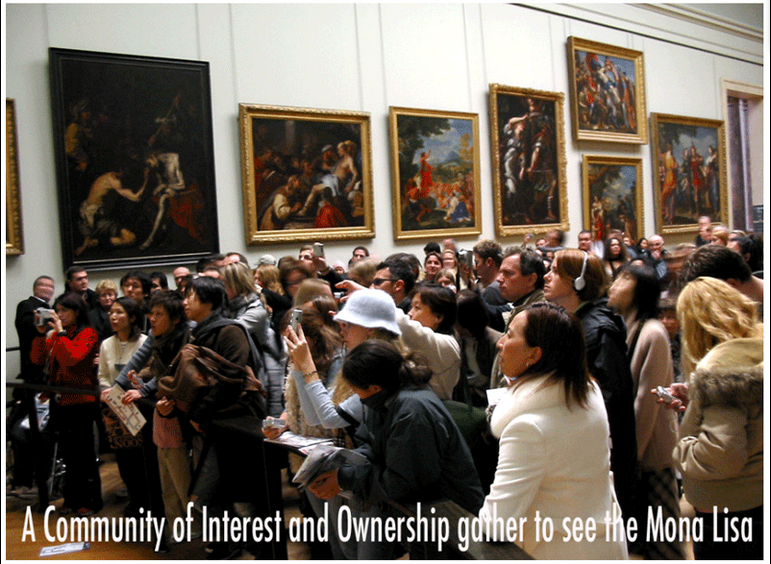A story, and an editorial, and on the same day, and the slow news day in Launceston, gives us something to muse upon – quite a bit actually.
How this 'place' is understood and is 'valued' needs to be talked about as it has a huge Community of Ownership & Interest (COI) that for quite some time it has hardly been talked about. Arguably, this COI is as poorly understood as the QVMAG itself.
Collectively, the COI has made a huge investment in the institution and its collections – and consequently in Tasmania's cultural life as well. In a 21st C context musingplaces, QVMAG included, have the potential to return significant dividends, rather a cluster of dividends, that might well exceed that of forestry's recent fiscal dividends. Someone needs to be crunching the numbers and arguably soonish.
Read on ... muse on!
BTW: The comments linked to the Examiner's offerings are worth reading
Concerned by the unsustainable economic pressure maintaining such a significant cultural icon places on the 108,000 ratepayers of greater Launceston, the council is seeking to shape a new governance model through more equitable funding.
LAUNCESTON'S Queen Victoria Museum and Art Gallery is at the mercy of an outmoded financial model that has the Launceston City Council seeking increased funding from the state's coffers.
Launceston City Council general manager Robert Dobryznski believes the move is vindicated relative to the $7.3 million the Tasmanian Museum and Art Gallery received in 2013 through state revenue.
TMAG's operating costs are estimated to be about $10 million for a collection valued at $340 million, attracting about 330,000 visitors a year.
Launceston is widely considered to have the country's best regional museum and to hold Tasmania's finest colonial works in its collection.
It records an estimated 130,000 visitors a year, and the pressure of operating two sites is eased considerably through what Mr Dobrzynski credits as a strong volunteer base.
The QVMAG collection was valued at $231.9 million three years ago.
Before Easter the Launceston City Council presented the then Labor cabinet with a range of priorities in seeking future funding, priorities which the newly elected Liberal government is still mulling over as it prepares to deliver its first budget on August 28.
"No other council in Australia has such an unfair burden placed on it as we do," says Mr Dobrzynski.
"It's come about through time, but right now the QVMAG places a $144 impost each year on every rateable property in the Launceston municipality."
As it stands the state government supports the museum and art gallery to the tune of $1.3 million; the council's budget for the two sites is $4.2 million.
The balance is met through retail, bequests, donations and small grants.
The funding agreement expires in mid-July.
"We would like to be considered on an equitable basis to the Tasmanian Museum and Art Gallery, which receives $7.3 million.
(State funding for operations has now increased to $8.6 million.)
"But right now I've been in talks with the Treasurer Peter Gutwein about future funding and we are looking at one year's renewal of funding, indexed to be reviewed for 2016," Mr Dobrzynski said.
"I'm pretty happy with that. It's pretty fair in the context of sensitivity to the perilous financial state of the Tasmanian economy right now and the government's priorities.
"But we have to work towards a more equitable solution, because it's unsustainable in the long term.
Mr Dobrzynski expects to be able to table a draft funding agreement to aldermen within weeks.
The state's Treasurer Peter Gutwein on Friday preferred to remain tight- lipped on the negotiations, saying "with the budget to be delivered on August 28, it is not appropriate to comment further."
He said it was worth remembering the council had a unique set of facilities demanding considerable subsidisation.
"We have the Aquatic Centre, Aurora Stadium and QVMAG - it's an inequitable mix for a city our size to sustain.
"What we have with QVMAG is a marketing issue, accessibility issues, parking issues in that everyone wants to park right at the door, and a funding issue - few other regional cities have a facility of this magnitude to manage."
Mayor Albert Van Zetten said with the QVMAG being such an institution of such state significance every funding avenue had to be explored.
"It's hosted what would have to be one of our biggest exhibitions last month in terms of We Are Hawthorn; both the Inveresk and Royal Park sites are now available for function hire; and full credit to [director] Richard Mulvaney for bringing the national museums conference with 350 delegates to town back in May.
"The conference was a coup for Launceston."
A rigorous review last year of operations to consolidate the QVMAG's future direction was carried out by Hobart firm MMC Link.
In its findings were recommendations to reintroduce entry fees, a clarification on intent about the future of the two sites as well as a need for a much- improved marketing strategy.
Mr Dobrzynski pointed to new signage outside Royal Park as one improvement, with installation of sizeable QVMAG signage on Paterson Street West car park imminent.
"We are aware we have two largely anonymous sites - Royal Park separated from the city by an arterial road and Inveresk set back from Invermay Road," he said.
While both Mr Dobrzynski and the mayor ruled out an entry fee to the QVMAG in general as it "had not worked before", both flagged that future significant exhibitions, such as We Are Hawthorn, which attracted more than 2500 visitors in just two weeks, could attract a fee at the door.
Mr Dobrzynski said whether QVMAG ever became just one site would be ultimately determined by the people of Launceston.
He was adamant there was no agenda for that to happen.
As to marketing, Mr Dobrzynski acknowledge it was a perennial problem. "Marketing takes money and you need to earn it before you can spend," he said.
What could be a timely flip for finances would be for the council's master plan for Inveresk to come to fruition.
This would see an $18 million 120-room student accommodation complex built for the University of Tasmania and a new cinema complex mix in with the already established museum, the Academy of Arts, Tramsheds, School of Architecture and Design and Aurora Stadium.
"Inveresk would then be truly multi-functional," said Alderman van Zetten.
"It would activate the street frontage to Invermay Road, it would be fantastic.
Later this month the mayor will also convene a meeting of diverse stakeholders in Launceston to scope ideas to reinvigorate the CBD through the arts, which he imagines would certainly encompass collaborative ideas for QVMAG.
"It's in the context of building on Launceston's great enthusiasm for the arts and instigating ideas that are unique to Launceston," Alderman van Zetten said.
"We have to work at getting the strategic mix right and then be proactive making it link more to the CBD."
 |
THE Launceston City Council has a strong case for an increase in state government museum and arts funding.
With a collection valued at $232 million, the Queen Victoria Museum and Art Gallery receives $1.3 million in recurrent assistance from the state government and has to find more than $4 million in operating costs .... The Tasmanian Museum and Art Gallery, with a collection valued at $340 million, this year receives $8.6 million from the state for operating costs .... As usual the regions have to fight for every cent they get, traditionally from a Southern-dominated government. In the Hodgman regime, the make-up is more evenly distributed, but there are still five Southern ministers, a Southern speaker and four Northern and North-Western ministers .... While there might be grounds for cautious optimism, recent history of dividing up the cake has been chequered. In the 2013-14 state budget, new and ongoing capital expenditure for the North and North- West amounted to 23 per cent of the total, despite the regions shouldering 49 per cent of the state's population .... Most of the redevelopment at Inveresk was federal money. The state government has spent about $2.9 million on QVMAG at Royal Park .... TMAG is enjoying a $200 million multi-stage redevelopment, with $30 million already spent on stage one. Work has already started on a $75 million arts precinct near the site of Hobart's Theatre Royal .... The state provided a small grant of $3000 for Festivale this year, while in Hobart it recently spent more than $15 million redeveloping Princess Wharf, where the Taste of Tasmania is held.
Against this background the Launceston City Council ought to pursue its claim vigorously for more QVMAG funding.
|


























